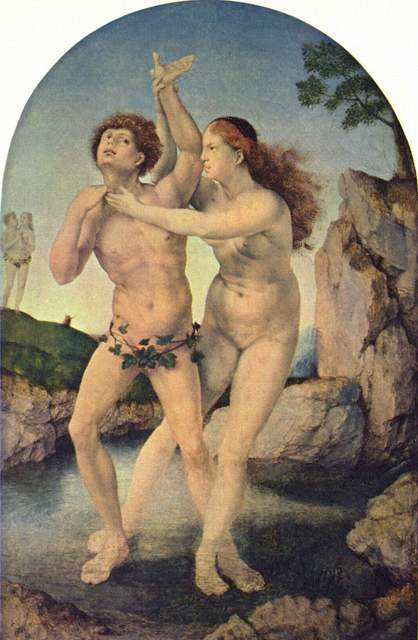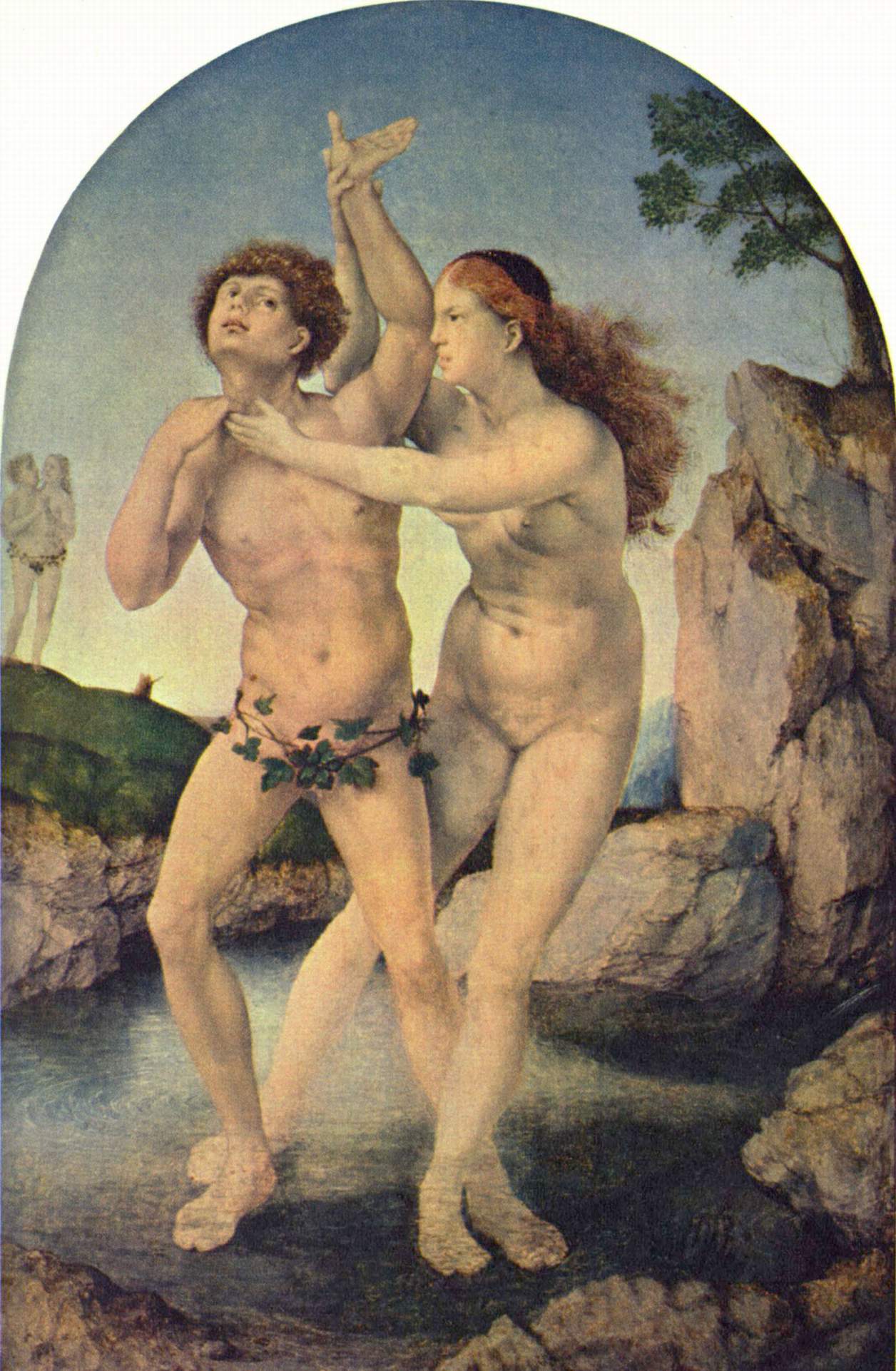Skip to main contentResource added 
The Metamorphosis of Hermaphrodite and Salmacis

Full description
The story of Salmacis and Hermaphroditus is a chapter in Ovid's Metamorphoses. The nymph Salmacis fell in love with Hermaphroditus, Hermes and Aphrodite's son. Hermaphroditus rejected her, but Salmacis outwitted him in the pool of water depicted in the piece of artwork. Salmacis prayed to the gods that she would be united with him until the end of time when Hermaphroditus spurned her once more. With the wish granted realism, Hermaphrodite and the water-nymph Salmacis fuse into an entity that possesses the combination of male and female features.
This piece was created between 1517 - 1520.
Comments
to view and add comments.
Annotations
No one has annotated a text with this resource yet.
- typeImage
- created on
- file formatjpg
- file size278 kB
- copyright statusPublic Domain
- creatorJan Gossaert (Painter), 1478 - 1532
- creditJan Gossaert
- restrictionsThis work is in the public domain in the U.S.
- rightsThe artwork establishment originates in (Jan Gossaert, Circa). It is public domain.
- rights territoryPublic domain in the country of origin and other countries where the copyright term is the author's life plus 100 years or fewer.


